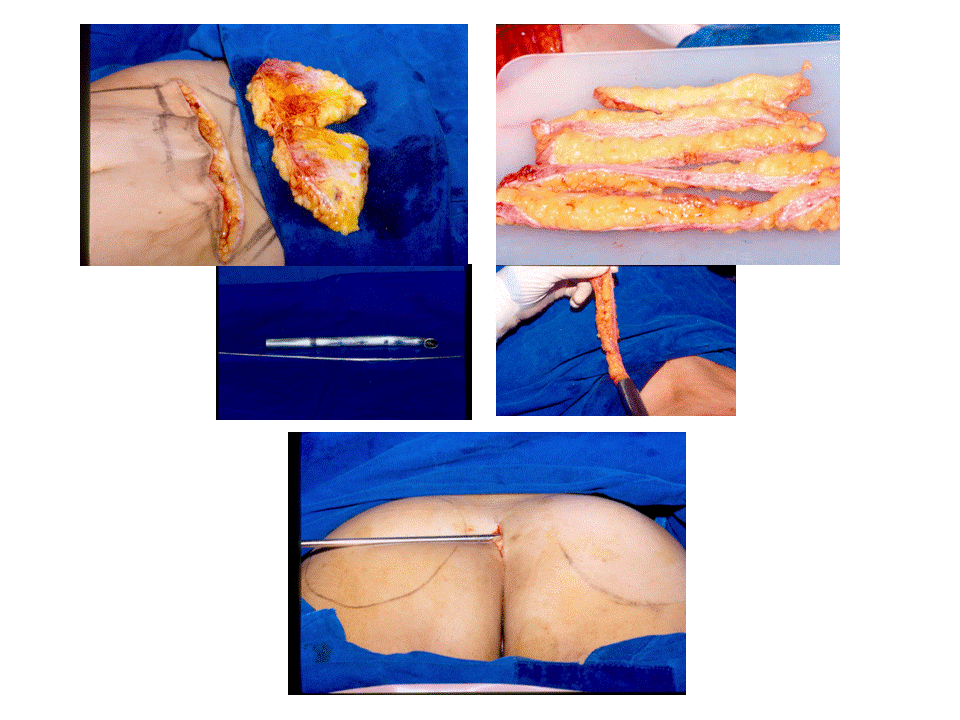Sunday, October 8, 2006
11254
Augmentation Gluteoplasty with Dermal-Fat Grafts from Abdominoplasty Resection
Purpose: The authors describe their technique for gluteal augmentation using dermal fat grafts harvested from the lower abdomen during standard abdominoplasty. We present our results at six months post-operatively and describe a novel surgical instrument utilized for this technique.
Methods: A novel surgical instrument, composed of a cannula and thread-puller was developed especially for introduction of large dermal-fat grafts. The cannula is 2 cm in diameter and 30 cm in length. One end is curved to facilitate the exit of the “thread-puller”, which is a rod of three millimeters of diameter that allows a large dermal-fat graft to be accurately placed through the cannula through a small incision. The procedure begins with a standard abdominoplasty, with the resected abdominal segment of skin and subcutaneous adipose tissue then de-epithelialized and cut into 2 cm wide strips (to allow better surface area-to volume ratio to increase neovascularization of the graft). The graft strips are placed in antibiotic solution while the gluteal recipient site pocket is dissected. The abdominal incision is closed and the patient turned into the ventral decubitus position and through an intergluteal incision, a pocket above the gluteus muscle fascia is created. The cannula is inserted through the intergluteal incision and the graft is guided through the cannula by the thread puller to the desired place. A graft-shaping compressive bandage is secured in place with an elastic adhesive tape.
Conclusions: The use of dermal fat grafts for soft tissue augmentation is an established technique in plastic surgery, but has not been utilized in the gluteal region. When applied in other settings, dermal fat grafts integrate easily into the surrounding tissue and maintain contour with relatively minimal reabsorption. The authors report here a technique for gluteal augmentation using dermal fat grafts taken from the lower abdomen during standard abdominoplasty using a unique surgical instrument used to assist in the placement of the large graft through a small incision. 5/6 patients achieved satisfactory gluteal projection and contour at six months post-operatively. The authors conclude that dermal-fat grafts represent an effective option for augmentation gluteoplasty. <>


